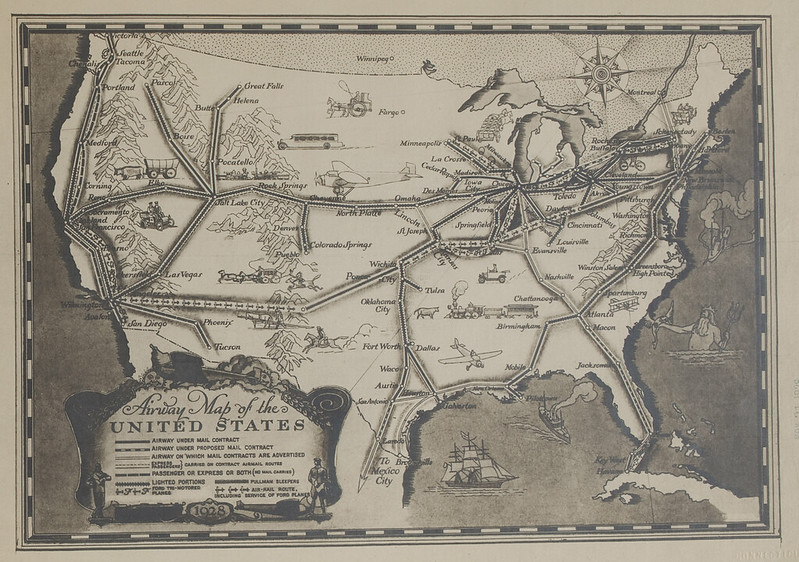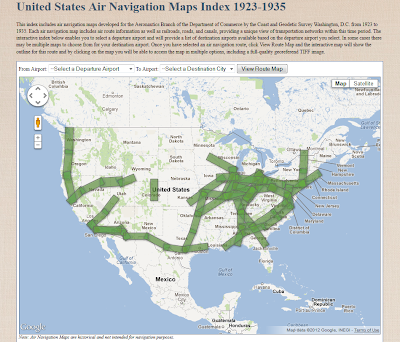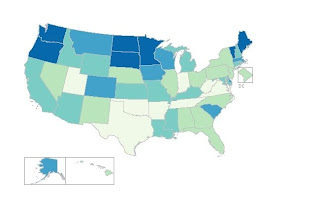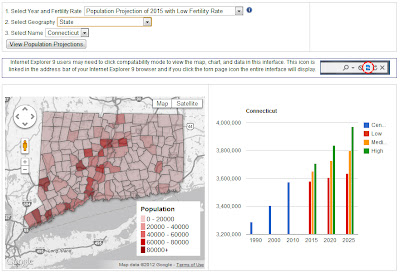Monthly Archives: June 2012
Mark Your Calendars – GIS Planning, Preparation, and Mitigation for Natural Disasters Meeting – June 29, 2012
Pizza, (Root)Beer, and GIS Workshop – June 21, 2012
For additional information visit the Connecticut GIS User to User Network website at: http://ctgis.uconn.edu
Updated Connecticut Population Projections Now Available through CtSDC
Exploring the 2015-2025 CtSDC Population Projections
View the 2015-2025 Population Projections for Connecticut at: http://ctsdc.uconn.edu/projections.html
Using GIS to Evaluate Vulnerability to Climate Change: A Case Study of Martha’s Vineyard
Dukes County, Massachusetts is composed of the county subdivisions on the island of Martha’s Vineyard and the Elizabeth Islands, which form the town of Gosnold. A few weeks ago, I completed my M.A. thesis in the Geography department which investigates where climate change could impact Dukes County. My study evaluates vulnerability to climate change through the examination of social vulnerability and vulnerability to climate sensitive hazards (i.e. sea level rise and storm surge events) and is designed to coincide with the jurisdiction of the Martha’s Vineyard Commission. The thesis includes maps created in ArcMap, with data from MassGIS, that locate vulnerable areas in the county as well as quantify the potential impact of hazards on specific land use categories. Additionally, a social vulnerability index quantifies vulnerability based upon demographic data from the 2010 Census and 2010 American Community Survey.
The overarching goal for this project was to develop a theoretical framework that serves as a GIS-based decision support system for policy makers to determine where climate change adaptation policies are needed. This framework is operationalized through a case study of vulnerability of Dukes County, Massachusetts. The abstract of the study can be seen below:
Climate Action Plans (CAP’s) are recent innovations in policy that have been catalyzed by a need to adjust the relationship between human activity and the Earth’s climate system. CAP’s often are composed of methods to mitigate greenhouse gas emissions in addition to adaptation strategies. Research indicates, however, that many plans focus on mitigation strategies while adaptation policies related to predicted changes caused by climate change are often overlooked. This thesis presents an integrative framework for locating areas that are in need of adaptation strategies through a GIS based decision support system that visualizes vulnerability. It is operationalized through an empirical study of Dukes County, Massachusetts.
Dukes County is a New England county composed of the islands of Martha’s Vineyard and Gosnold. The county has a long history of commercial fishing, but more recently caters to affluent seasonal tourists. With both economic activities heavily reliant upon the ocean as a resource, climate sensitive hazards, such as sea level rise and tropical storms, pose an important risk to the population, built environment, and the natural environment that has made the study area a highly desirable New England tourist destination.
The results of my case study conclude that long term climate processes have shaped the way in which Dukes County has developed through the geomorphic influence of the last glaciation. The up-island towns of Martha’s Vineyard (Aquinnah, Chilmark, & West Tisbury) and Gosnold differ in geography- both physically and socially- from their down-island counterparts (Edgartown, Oak Bluffs, & Tisbury). This geographic variation results in an unequal distribution of vulnerability related to climate sensitive hazards distributed throughout the county, which have been identified as storm surge events in addition to chronic sea level rise. Generally speaking, my study concludes that…
Flatter land that is also lower in elevation down-island has traditionally been developed and inhabited more than the up-island land of Martha’s Vineyard and the islands of Gosnold. Consequently, larger populations and more developed land are at risk to hazards whose exposure is largely dependent upon elevation, like storm surge and sea level rise (down-island).
The full text of this study is now available online through Digital Commons@UConn: An Integrated Approach for Developing Adaptation Strategies in Climate Planning: A Case Study of Vulnerability in Dukes County, Massachusetts
Aerial Photography Mosaics and MAGIC 2.0 Online Updates Complete
MAGIC’s WMS services and map mash-ups, including MAGIC 2.0 Online Maps are now back online. We apologize for the unexpected downtime of these services.
Historical Aeronautical Navigation Maps at MAGIC
 Today in the United States we can fly coast to coast in a commercial airliner comfortably in less than 6 hours. Air travel has not always been this easy or seamless. Historical air navigation techniques and practices can help us envision the beginnings of air travel and air mail, and really show how drastically aviation navigation technology has evolved in just over 100 years of flight. To help relive and appreciate air navigation from the onset of commercial flight, the University of Connecticut Libraries Map and Geographic Information Center (MAGIC) brings you an interactive index to help users identify flight routes commonly used for passenger and air mail service in the 1920’s and 30’s. Back then there was no such thing as hitting the direct button on your Garmin and following the pink line to your destination!
Today in the United States we can fly coast to coast in a commercial airliner comfortably in less than 6 hours. Air travel has not always been this easy or seamless. Historical air navigation techniques and practices can help us envision the beginnings of air travel and air mail, and really show how drastically aviation navigation technology has evolved in just over 100 years of flight. To help relive and appreciate air navigation from the onset of commercial flight, the University of Connecticut Libraries Map and Geographic Information Center (MAGIC) brings you an interactive index to help users identify flight routes commonly used for passenger and air mail service in the 1920’s and 30’s. Back then there was no such thing as hitting the direct button on your Garmin and following the pink line to your destination! |
| Interface for viewing air navigation maps in the MAGIC collection |




